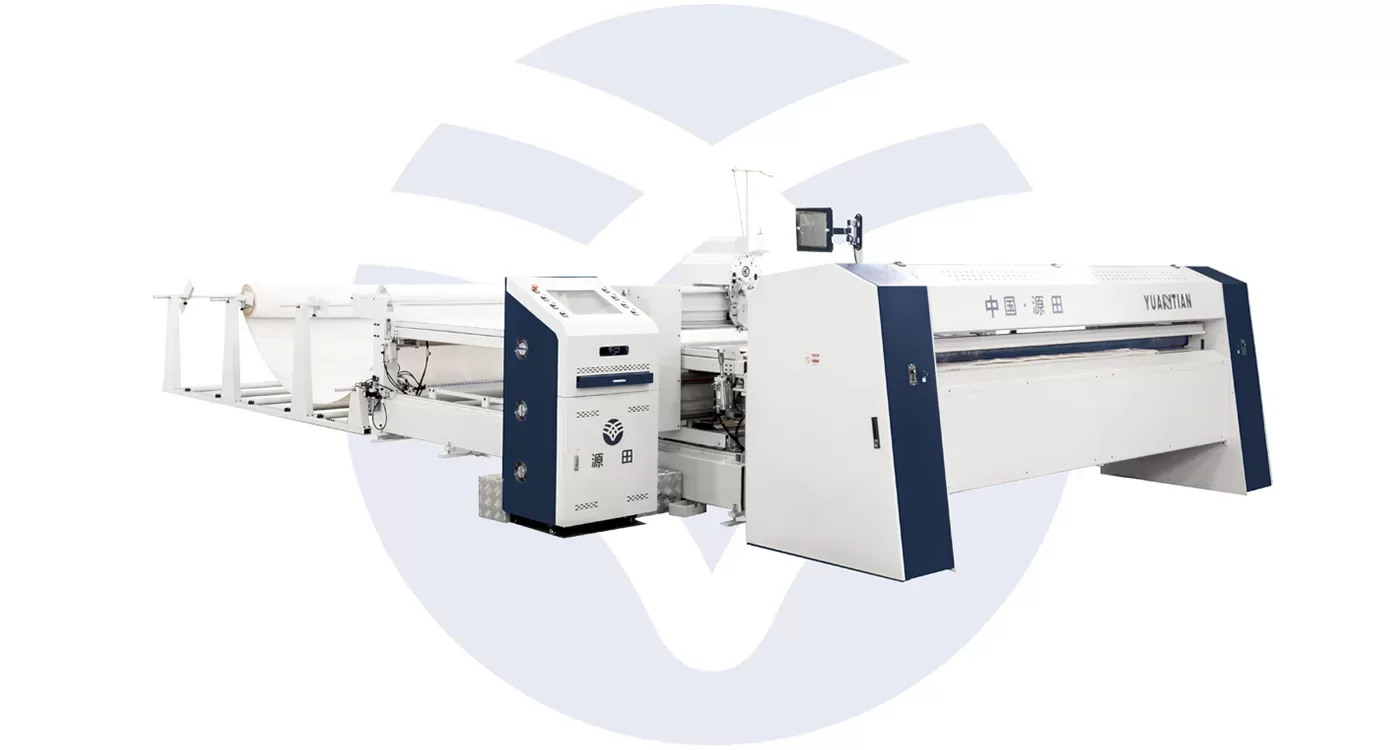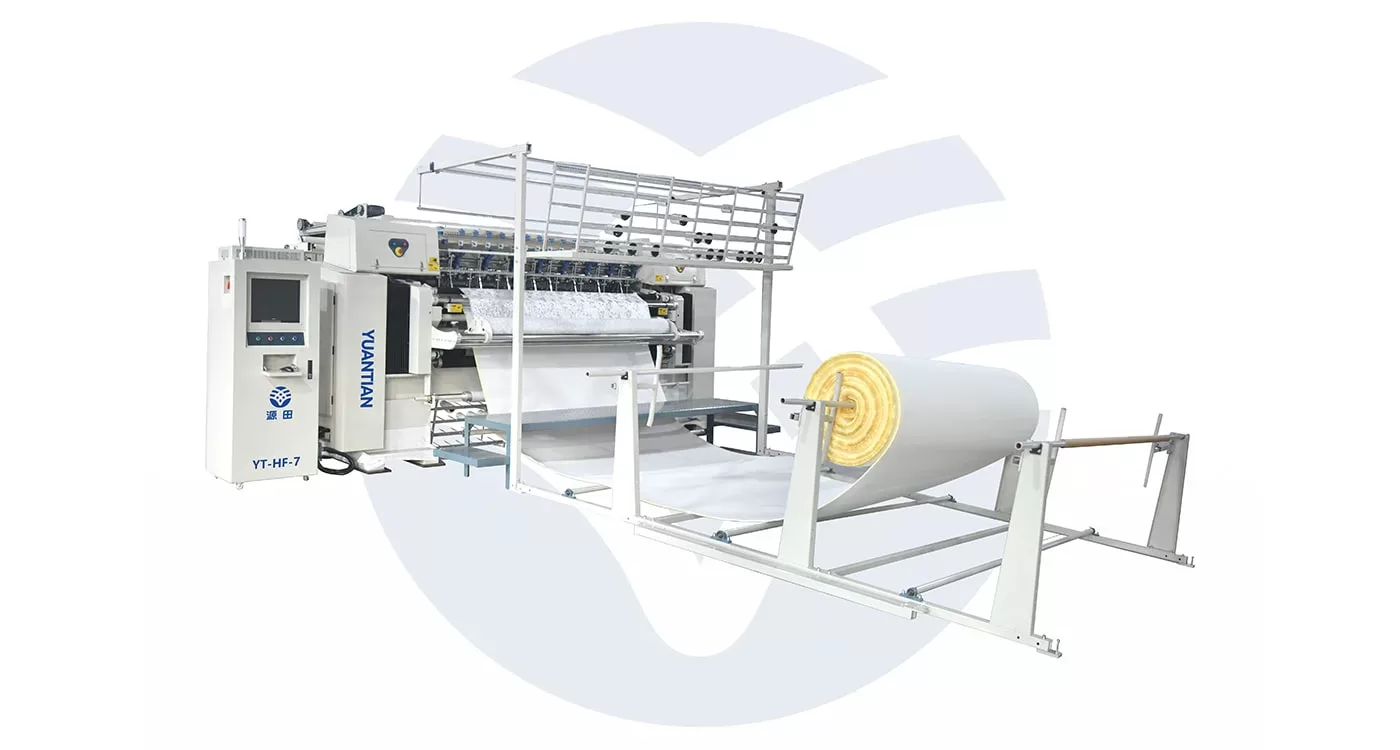- Home » Efficiency Meets Quality: Modern Mattress Quilting Machine Innovations
The mattress industry is continuously evolving, driven by advancements in technology that improve both production efficiency and product quality. Among these innovations, modern quilting machines have become indispensable for manufacturers seeking to produce durable, comfortable, and aesthetically appealing mattresses.
Quilting machines, which stitch layers of fabric and padding together, play a pivotal role in defining the feel, durability, and design of mattresses. This guide explores the latest innovations in mattress quilting machines, highlighting their types, essential features, benefits, and maintenance needs.
The Role of Quilting Machines in Mattress Production
Mattress quilting machines are designed to stitch the top layers of the mattress, generally fabric and padding, in intricate patterns that add both comfort and durability. These machines not only add beauty but also make the interior structure of the mattress more integrated, preventing layers from shifting or bunching during the life of the mattress. As mattress makers strive to meet higher standards of comfort and longevity, investments in sophisticated quilting machinery become increasingly important.
Importance of Quilting in Mattresses
Quilting plays an important role in providing a uniform and consistent surface on the mattress, which is related, of course, to the level of comfort for a user. The process also reiterates the durability aspect of the mattress because good quilting prohibits inside elements from changing their positions over time. Moreover, quilting models and patterns can be one of the major distinctive features for a brand to create some special aesthetic appeal for customers.

Types of Mattress Quilting Machines
There are a number of types of quilting machines meant for different scales and needs of production. Choices depend on the volume of production, budget, and design requirements, among other things.
Single-Needle Quilting Machines
Single-needle quilting machines stitch one thread at a time and can quilt complex patterns. This machine sews one line at a time with a single needle and is therefore programmable for custom design work. These machines are fit for high-end or personalized mattress manufacture since they allow great detail and flexibility in patterning. They are, however, much slower as compared to multi-needle machines, hence their suitability for high-volume manufacturing is very limited.
Multi-needle Quilting Machines
Multi-needle quilting machines are constructed for high-speed production and hence find wide application in the large-scale manufacture of mattresses. With several needles that can work simultaneously, these machines sew simpler and repetitive patterns on vast areas. This greatly increases speed. Multi-needle machines thus act as an ideal thing for those manufacturers who believe in volume and consistency since high quality and uniform stitching are delivered at faster speeds.
Computerized Quilting Machines
The computerized quilting machines are far more advanced in their precision and versatility, storing and stitching in even the most complex stitching patterns with great accuracy. This would make them especially useful for those manufacturers who need intrinsic designs to be worked out and at the same time keep the manufacturing process running at an efficient pace. Having digital controls and programmable settings, these machines enable the manufacturing company to switch patterns easily and give flexibility without forfeiting speed and consistency.
Key Features to Look For in Modern Quilting Machines
When selecting a quilting machine, one is bound to make their selection criteria based on efficiency, design flexibility, and ease of use. This is so because hereafter are the key features to look for in modern quilting machinery.
Pattern Versatility and Programming Options
Higher-level quilt machines allow for programmable pattern options. Such machines provide great opportunities for the operators to create and save their exclusive patterns. Pattern variability is a prime concern for those manufacturers that would like to sell unique products. It helps them to reshape the designs based on market needs or customer requirements.
The devices with user-friendly software operation interfaces enable pattern selections and their adjustments, making the processing easier, thereby reducing setup time to enhance productivity for the benefit of a business with higher volumes of production.
Speed and Efficiency Controls
Speed controls enable the operator to adjust the stitching speed in relation to the complexity of the design and type of fabric being sewn. For less intricate designs, higher speeds can be used to increase output without sacrificing quality. In return, more detailed, thicker materials can have slower speeds that maintain accuracy and avoid thread breaks. Machines capable of automatic speed adjustments are especially handy, automatically providing the perfect stitching speed for any pattern.
Auto Thread-Cutting and Tension Adjustments
Among the vital features that high-end quilting machines possess are automatic thread-cutting mechanisms and adjustable thread tension. The result of such mechanisms is that production is smoother because of fewer instances of manual intervention, hence faster. Correct adjustment of the tension keeps the stitches even, which avoids unevenness that can result in breaks or damages in the thread and material, leading to slowing down production and degraded product quality.
Safety Features and Ergonomics
Modern quilting machines should have safety features like emergency stop buttons, protective guards, and ergonomic design. Such a design minimizes injuries, especially when the production is running at full speed. It is important to note that ergonomic designs of machines minimize operator fatigue further, hence improving productivity with reduced errors.
Benefits of Using Advanced Quilting Machines in Mattress Production
State-of-the-art quilting machines have a number of advantages for mattress manufacturers, which range from cost savings to heightened product appeal.
Increased Production Efficiency
This allows automated quilting machines, especially the multi-needle and computerized ones, to cut down on the time required to complete a complicated quilting pattern. The efficiency leads to an increase in the capacity of manufacturers, enabling them to meet demand much more effectively. Also, automated machines use resources most effectively by reducing the potential for manual labor, thus saving costs.
Improved Product Quality and Consistency
Modern quilting machines make certain that the stitching quality of each mattress is excellent in terms of durability and comfort. In a manual type of quilting, since it would depend on an operator, uniformity could not be assured. This was changed when automated machines took over because now the pattern is very consistent with little deviation possible. Consistency helps in building brand dependability and customer trust.
Flexibility in Design and Customization
Programmable options and digital controls further enable manufacturers with advanced quilting machines to try out new patterns and designs, hence giving them more flexibility to move with changing consumer trends. In a competitive market, options for customization have the power to bring about exclusivity in products. This flexibility enables the companies to adjust to special orders or seasonal demand on a very short lead time.

Maintenance and Troubleshooting Tips for Quilting Machines
Quilting machines are generally designed to be robust, though, like all machinery, they require periodic servicing to keep their performance optimal and extend their life span. The following pages offer some good practices in machine maintenance and troubleshooting for a continuous production process.
Routine Cleaning and Lubrication
Quilting machines are designed to work at high speeds. This implies that dust and debris will gather, especially in the moving parts of the machine. Regular cleaning prevents this sort of accumulation that hampers a machine’s performance. Regular lubrication keeps the running parts well and minimizes friction that causes wear and tear. Following the manufacturer’s guidelines with respect to cleaning and lubricating will provide your machine with the best performance.
Monitoring and Replacing Needles
Needles wear out. Poor stitching and damage to the fabric can result when sewing with dull needles. Good stitch quality can be maintained through periodic needle inspection and timely needle replacement. Compatible needle quality with the requirements of the machine will also extend the life of the machine.
Inspecting Tension Settings and Belts
Poor thread tension and worn belts are also frequent glitches that may poorly affect stitch quality. Regularly checking tension settings and performing changed requirements maintain stitches in uniformity. Checking the belts for wear and replacing them at proper times helps to avoid disruptions and keeps the machine operating with efficiency.
Conclusion
Modern quilting machines are a powerful asset for the mattress industry, combining efficiency and quality in ways that were previously unattainable. Today’s quilting machines offer unprecedented levels of customization, consistency, and productivity. For mattress manufacturers aiming to produce high-quality products that stand out in a competitive market, investing in these innovative quilting machines is essential. By staying updated on the latest developments, manufacturers can improve both production efficiency and product appeal, meeting the evolving demands of consumers.
Связанные с ними товары

















